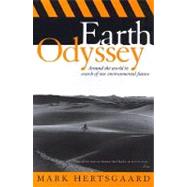
Note: Supplemental materials are not guaranteed with Rental or Used book purchases.
Purchase Benefits
What is included with this book?
| Prologue: Playing the Sorcerer's Apprentice | p. 1 |
| "... We Are Still Here" | p. 17 |
| Bicycles, Churchill, and Evolution | p. 49 |
| The Irresistible Automobile | p. 80 |
| To the Nuclear Lighthouse | p. 119 |
| "Is Your Stomach Too Full?" | p. 156 |
| How Population Matters | p. 189 |
| The Hurricane of Hell | p. 221 |
| Sustainable Development and the Triumph of Capitalism | p. 260 |
| Living in Hope | p. 289 |
| Epilogue: Ambassadors from Another Time | p. 319 |
| Acknowledgments | p. 336 |
| Notes | p. 339 |
| Index | p. 363 |
| Table of Contents provided by Blackwell. All Rights Reserved. |
The New copy of this book will include any supplemental materials advertised. Please check the title of the book to determine if it should include any access cards, study guides, lab manuals, CDs, etc.
The Used, Rental and eBook copies of this book are not guaranteed to include any supplemental materials. Typically, only the book itself is included. This is true even if the title states it includes any access cards, study guides, lab manuals, CDs, etc.
Excerpted from Earth Odyssey: Around the World in Search of Our Environmental Future by Mark Hertsgaard
All rights reserved by the original copyright owners. Excerpts are provided for display purposes only and may not be reproduced, reprinted or distributed without the written permission of the publisher.